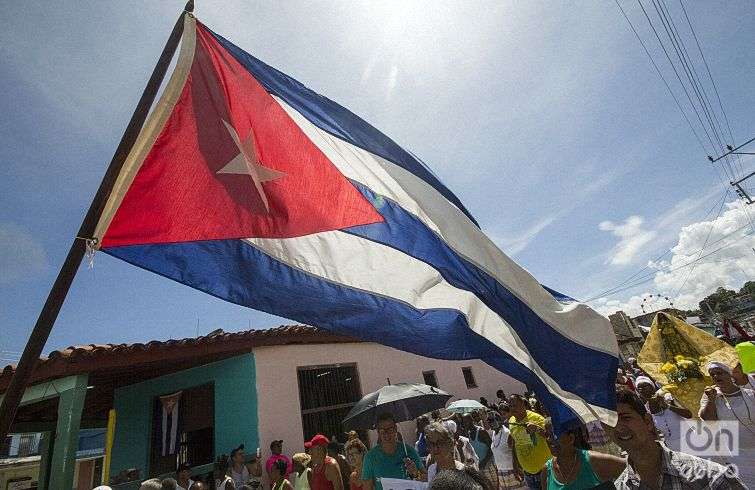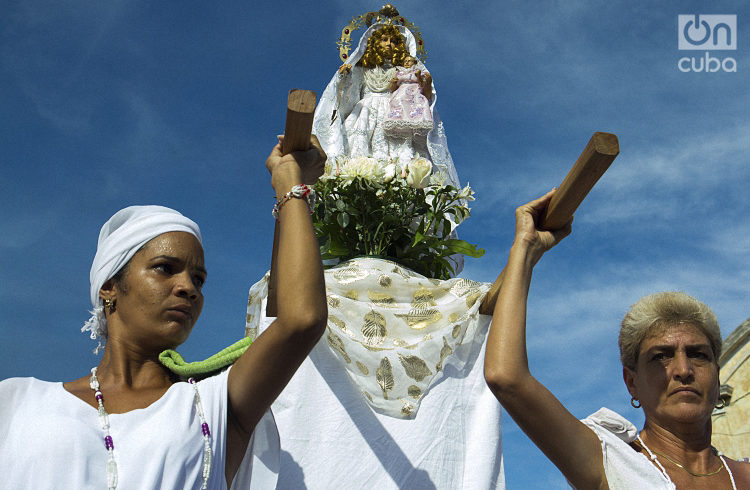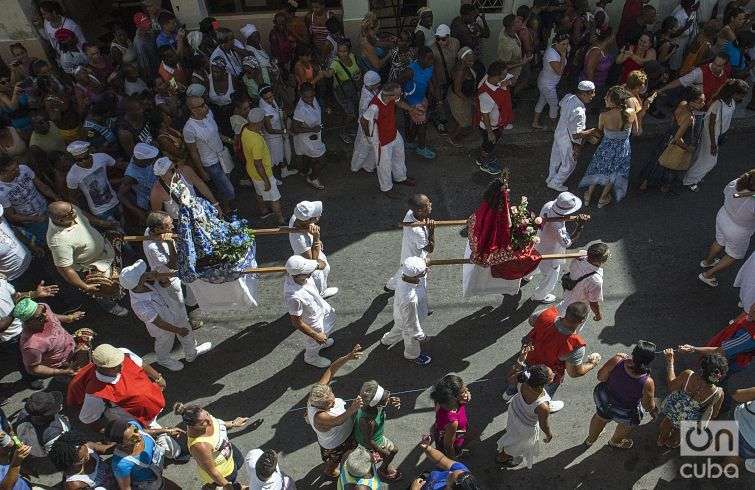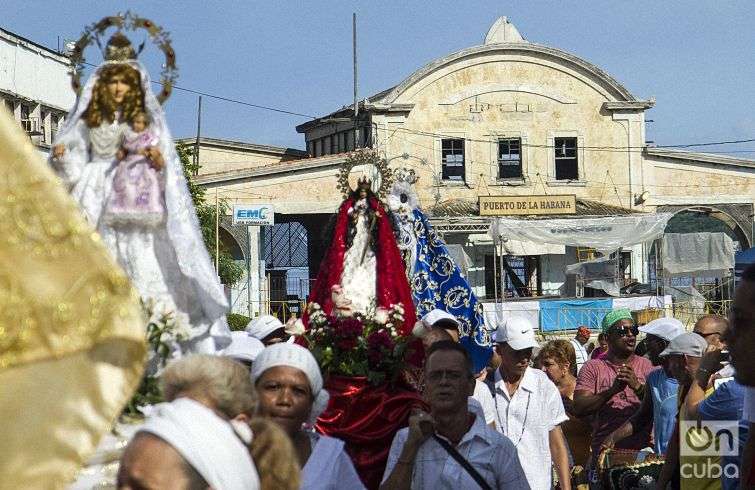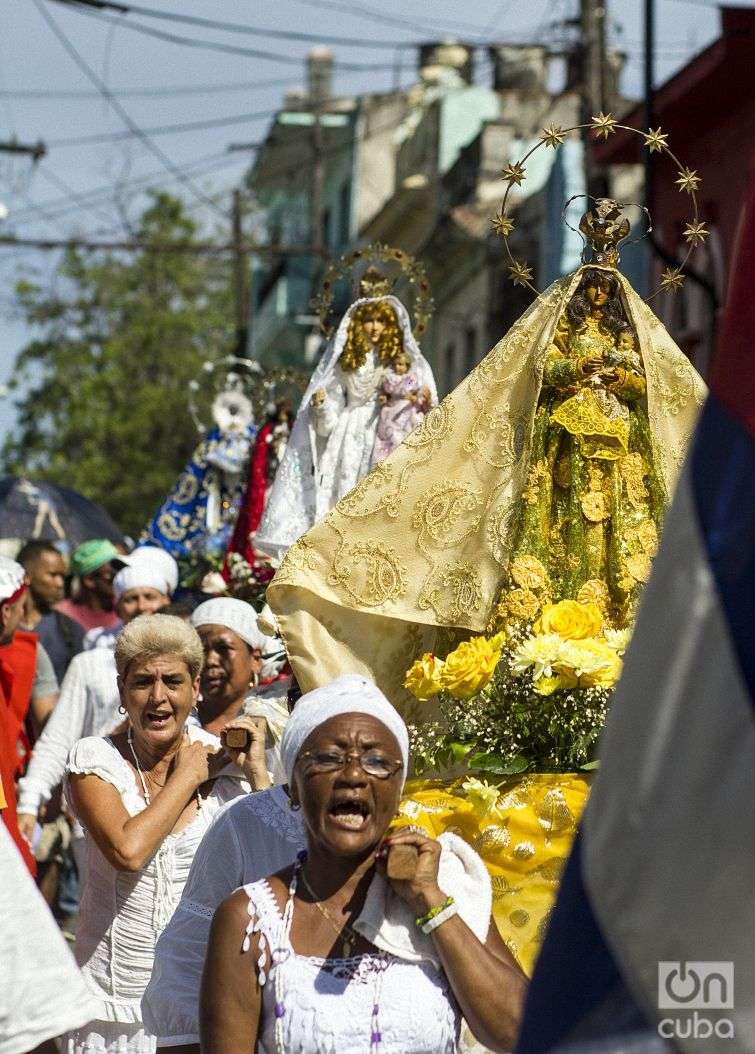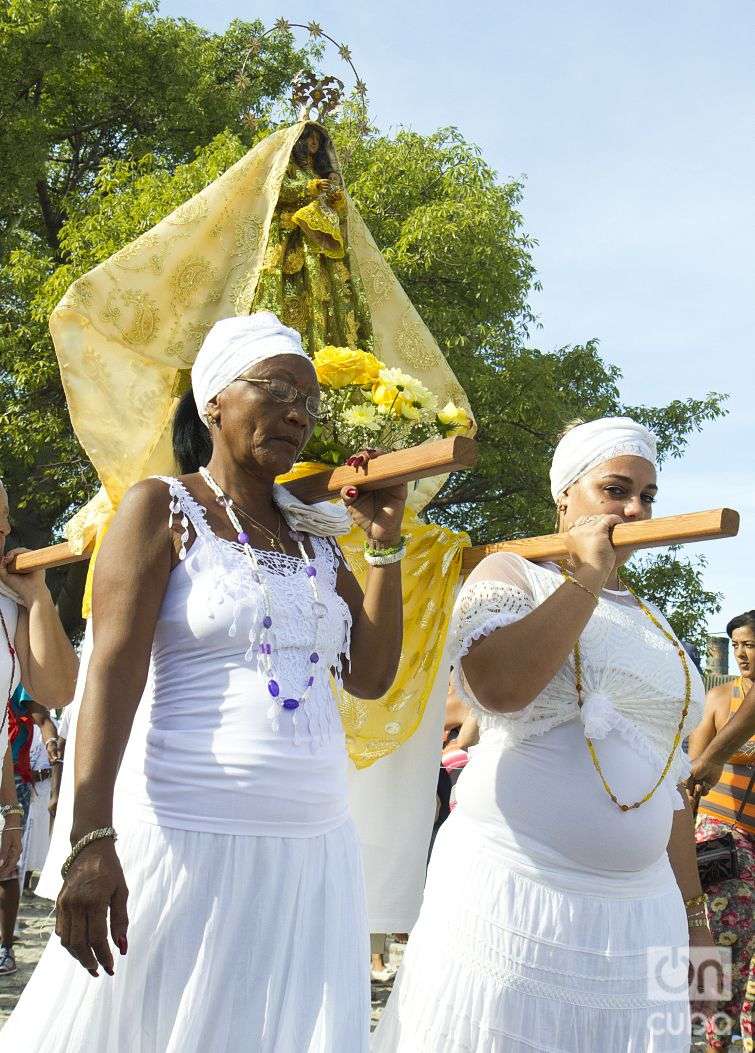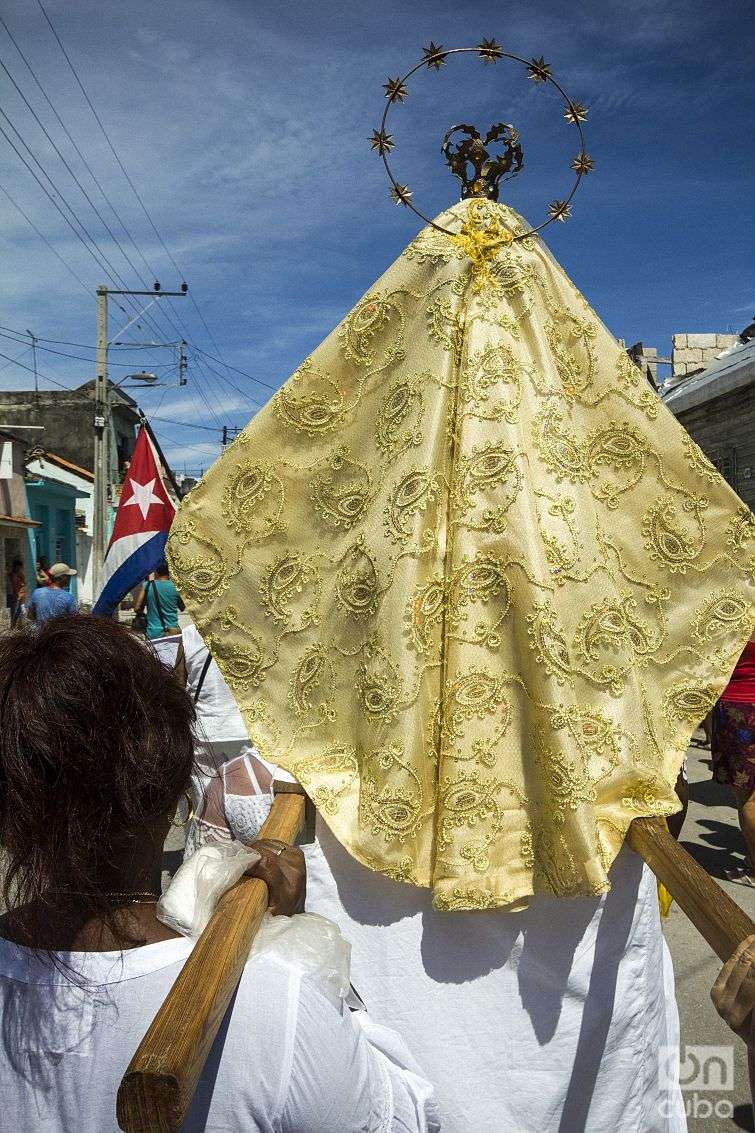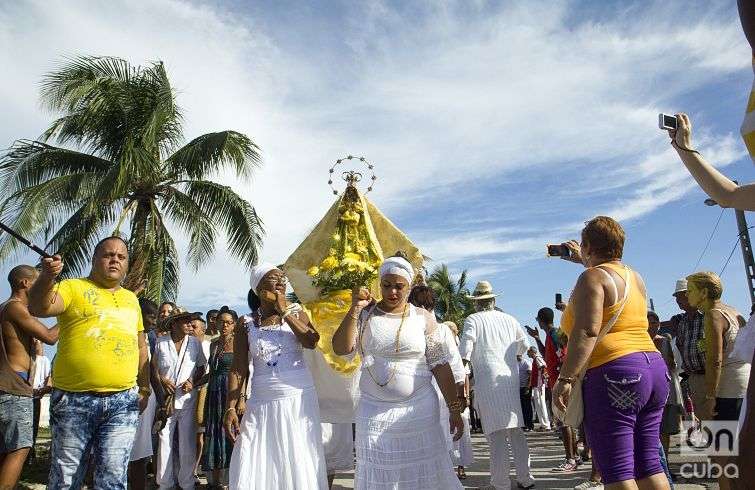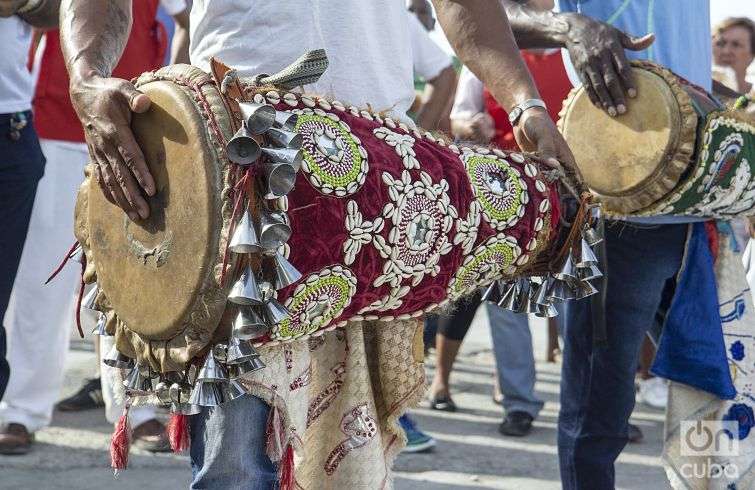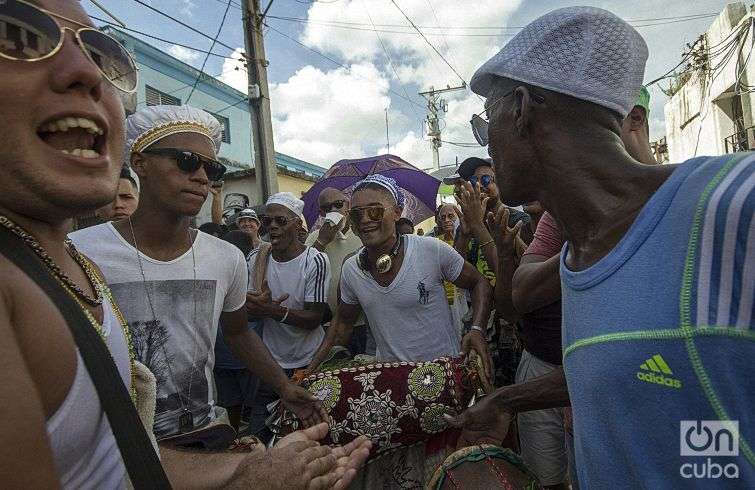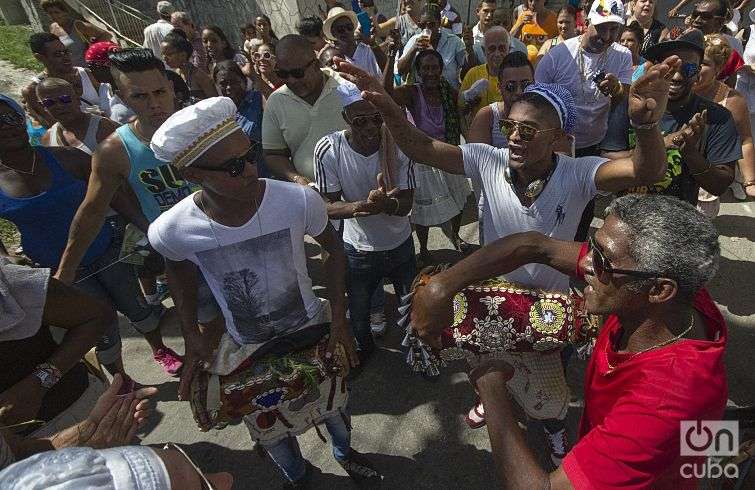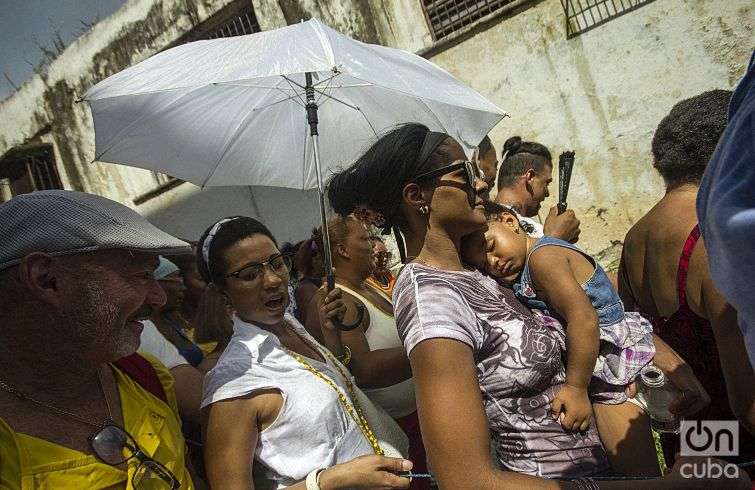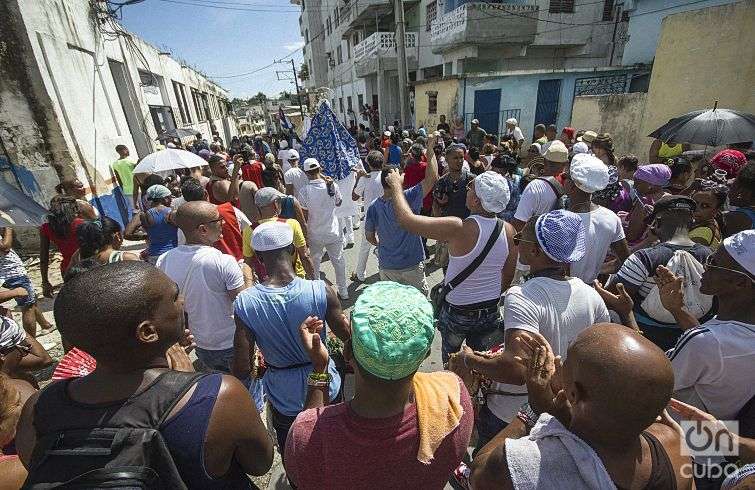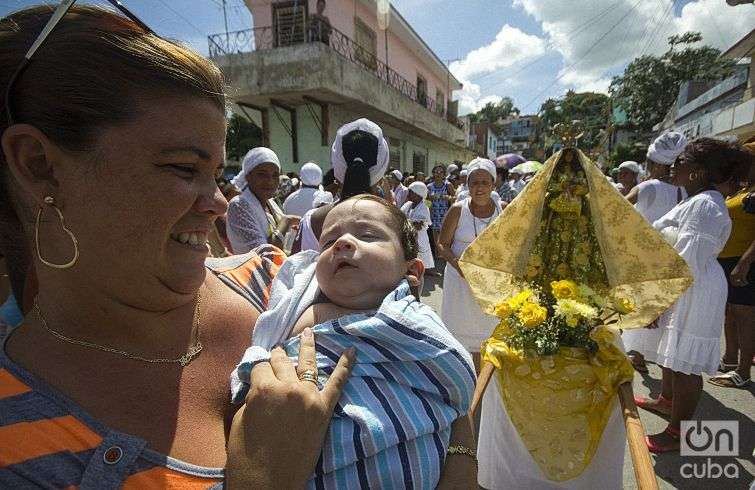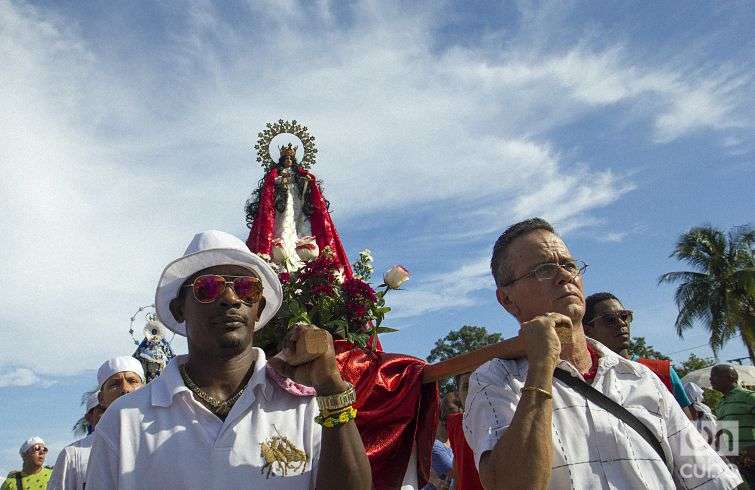The town of Regla is blue, the same blue as that of the sea and of Yemayá. Everything got to it through the sea: the first slaves and Santeria. “Now they have forbidden walking the virgin around here,” says Moraima, sitting on a wall by the bay, “but that is what she is asking for. That she is taken through the sea and that a basketful of fruit be given to her so that this town follows the path it needs.”
That’s how it was before, every September 7 and 8 during the procession of Our Lady of Regla and the Cabildo (African ethnic association in colonial Cuba). But fruits are no longer offered to her, everything has disappeared, the fruits and the Cabildo; although the latter has appeared again 55 years after its last exhibition.
According to Angelito, one of the island’s most respected Obba Oriaté, in that last Cabildo held in 1961 the images had to enter before because of an incoming storm. Since then the town of Regla has never again been able to stroll its orishas (Santeria deities) to the rhythm of the batá drums, but this September 9 Saint Barbara and Our Ladies of Mercy, Charity and Regla were again out in the street.
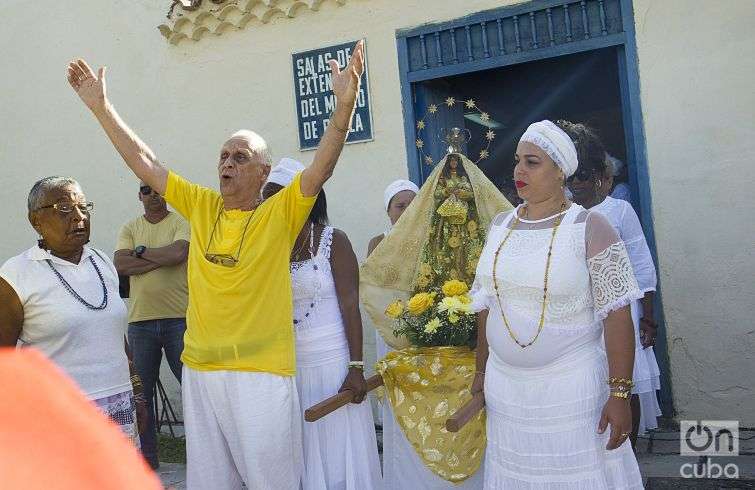
Oshún goes in front and Yemayá behind; between them Obbatalá and Shangó, moving the believers in white and red. The chant to Eleggua, which is a greeting, starts the procession and from then on everything is dancing and conga nonstop. Or yes, the drum players stop twice, in Martí and Calixto García streets, to drink water. The neighbors rapidly take out their bottles full of water, they relieve their fatigue and the drum players are ready to continue.
“What has been done here today is rather similar to what was done in 1961, but at the time the oldest Cabildo, that of Pepa, would leave from the church with ecclesiastic music, and outside in the narrow street the drums and a sea of people would be waiting for them. They would go to the seaside drive, where the people would get a bit wet and then came the entrance to the Emboque, the former mooring of the small ferryboats, the images would be placed there and coconuts were thrown into the sea. There were also many commercial establishments with sweets and fruits which the people bought and threw as offerings to Yemayá,” Angelito recalls.
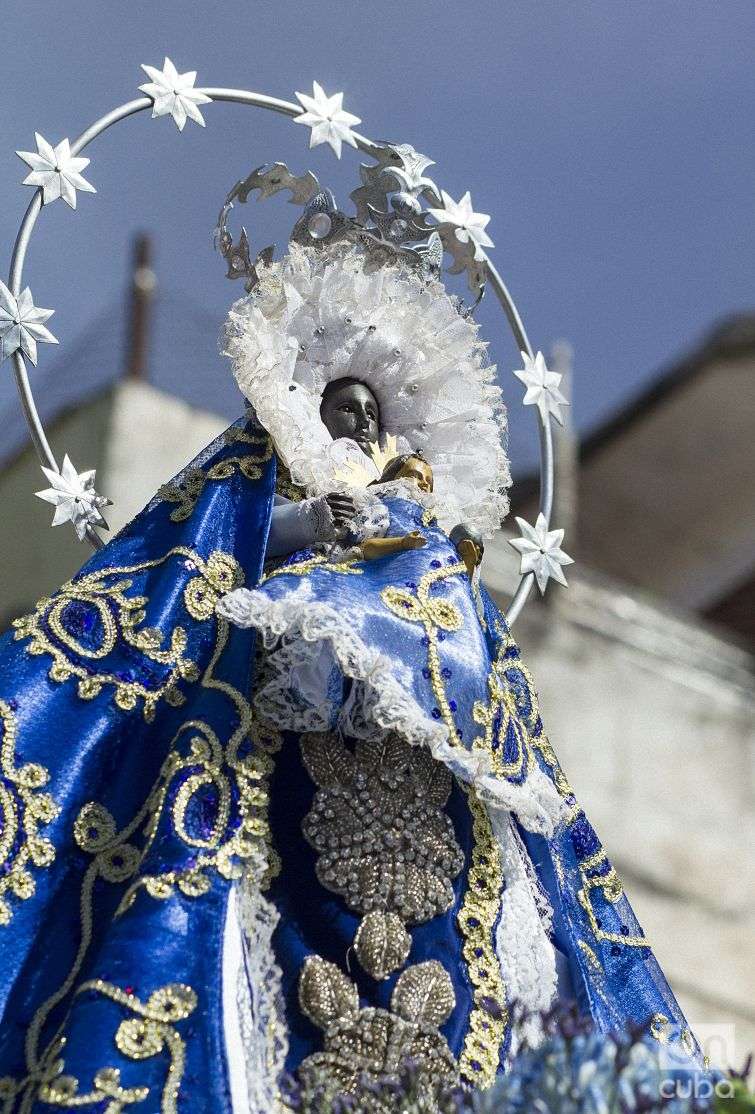
Now the procession is extended along Martí Street to the new cemetery, a site where the people grab Paraíso branches and beat themselves with them. “Grab one, sweetie, clean yourself with this and leave what’s bad here,” says to me an inhabitant of Regla. “And to whom are they singing now?” I ask: “That’s Ossaín, the owner of the weeds, there’s where they sing to them, the ones who heal us.”
There, at the door of the cemetery, the people continue dancing, not to the conga, they also sing to the saints related to the end of life, like San Lázaro or Our Lady of Candlemas and then the names of Babalú Ayé and Oyá, which in the Yoruba religion are two dead people orishas, are heard.
“We started fighting a long time ago to rescue that tradition,” says Raiza Fornaguera, director of the Regla Municipal Museum. “Finally, in 2015 it was approved that the images be taken out but not making the complete procession. That was a sort of a test run. Fortunately, last year it was already approved in the minutes of the Municipal Assembly that the Cabildo come out as one of our patron saint festivities.”
The first procession in Regla took place on September 9, 1923. At the time, it was the Cabildos of Pepa and Susana, owners of two temple houses with their four orishas, until the processions were forbidden in 1961. Pepa’s family donated her original images to the Museum and Susana’s are still in her home. Now, with other figures that belonged to Juan Dionaso, the Museum’s restorer and principal promoter of the project, the people have built their own virgins, donating from a small piece of fabric to the hair to make the wig.
“This is not the Cabildo of Pepa or of Susana or of Juan, it is the Cabildo of Regla, because it represents the rescue of a tradition based on a group of natural carriers: a temple house with a guiro group and original drums, really religious,” affirms Raiza.
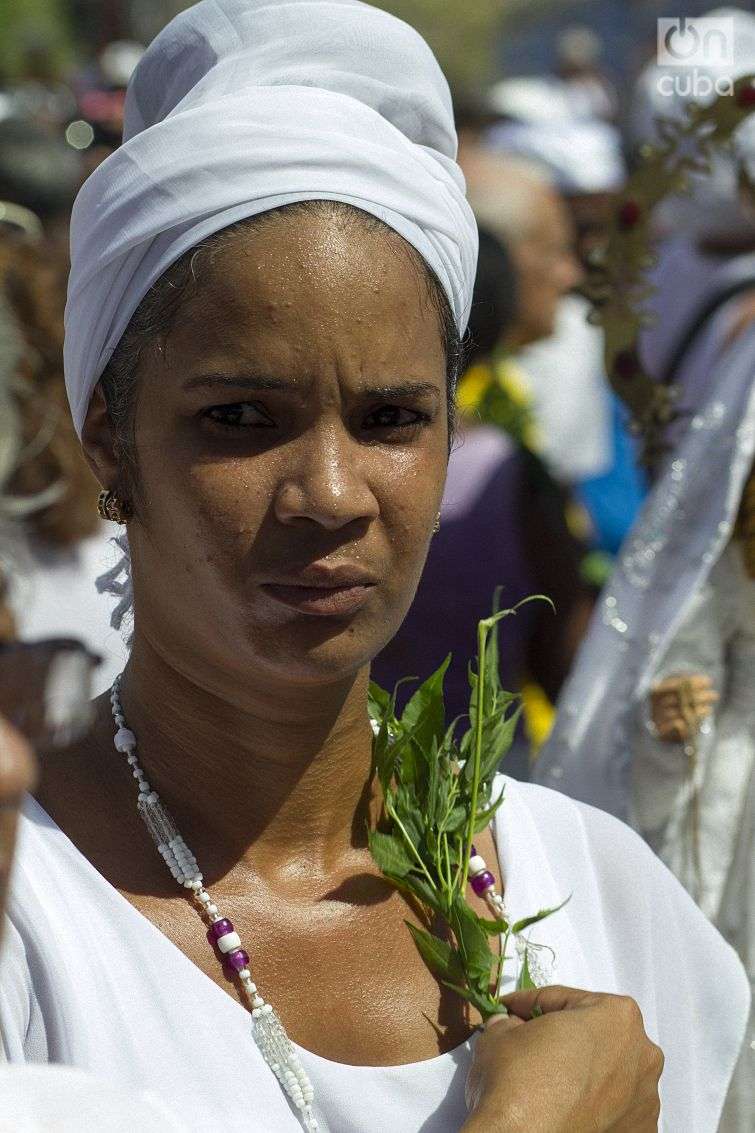
After leaving the cemetery the procession then returns through Calixto García Street. There, more neighbors, more curios people who look from their balconies, people who dance, sing, people who pray, join devotees.
“What do you ask the virgin for?” I ask a daughter of Yemayá.
“For health, sweetheart, health comes first; but later that the problem with my home, which is falling on me, be resolved. A lot of partying, miss, but it’s also necessary to talk about the problems. I tell the patron saint of Regla and the saints that are here that they somehow help me.”
“And how is Yemayá?” I continue: “They say that she likes white flowers and that she is ruthless when she punishes….”
This September 9 Saint Barbara and Our Ladies of Mercy, Charity and Regla were again out in the street. Photo: Yaniel Tolentino.
“Everything begins with Obbatalá and Yemayá, according to what we have been taught,” Angelito, Regla’s most beloved Santeria priest, now tells us.
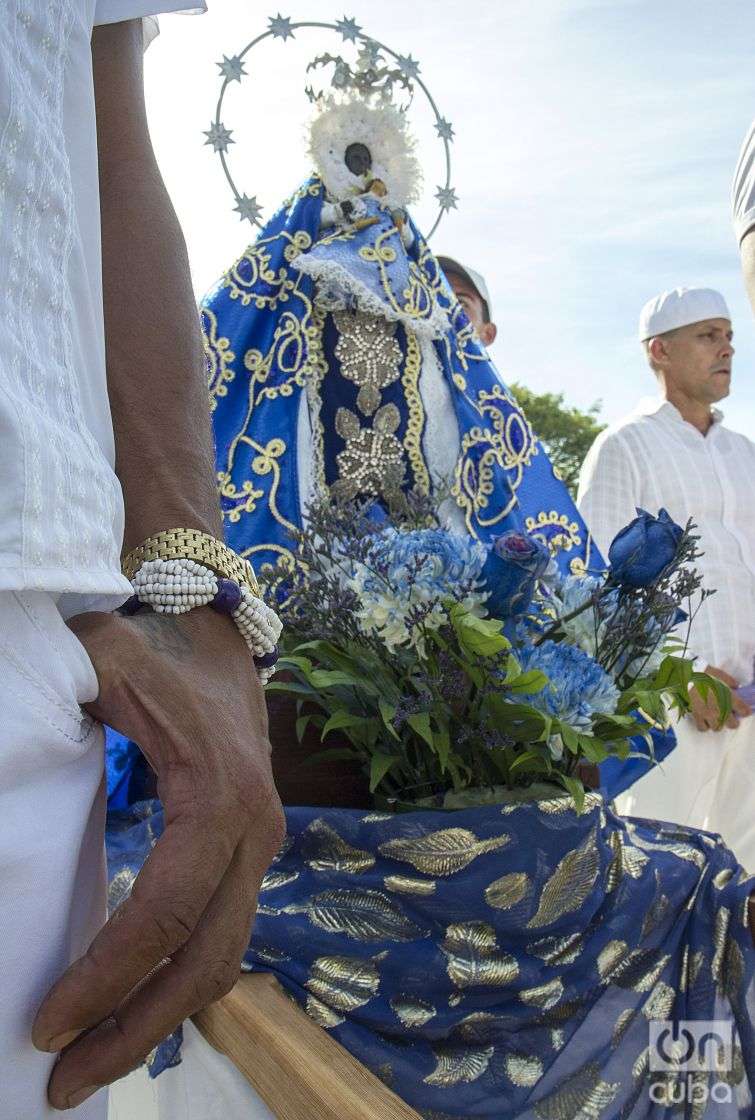
“Yemayá ruled the world before Obbatalá, but took over the planet, each time stole more earth and we earth people had to live and there’s where the son of Olofin came in to play a role. But the saints do not punish, they know our way of acting, of thinking and they treat us according to that. What the saint least wants to do is punish. What the saint does is that it drifts away if our behavior is very bad, it leaves us alone, but it is we who destroy ourselves.”
Before, the Cabildo’s procession was much longer, it lasted the entire day but many stops were made and there was a great deal of public because people came from everywhere. Now Angelito gets tired, because he is an elderly man and this time everything has been done in a hurry. But it’s what we have, he says, and one has to be grateful.
“Look, I’m full of goose bumps,” commented a lady in the street. “This was taken away many years ago, who remembers, but it’s back…It had to come back. Everything comes back.”
